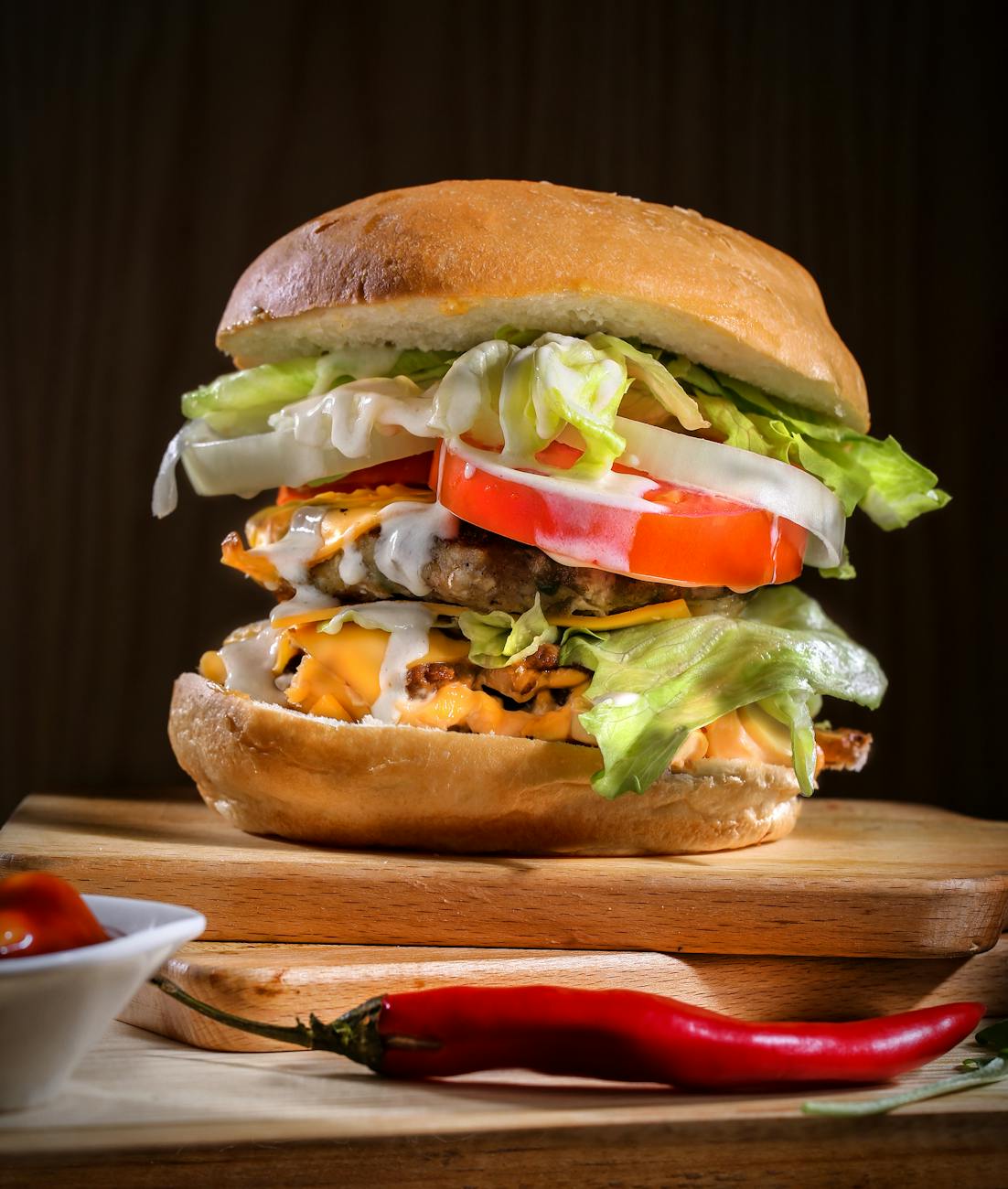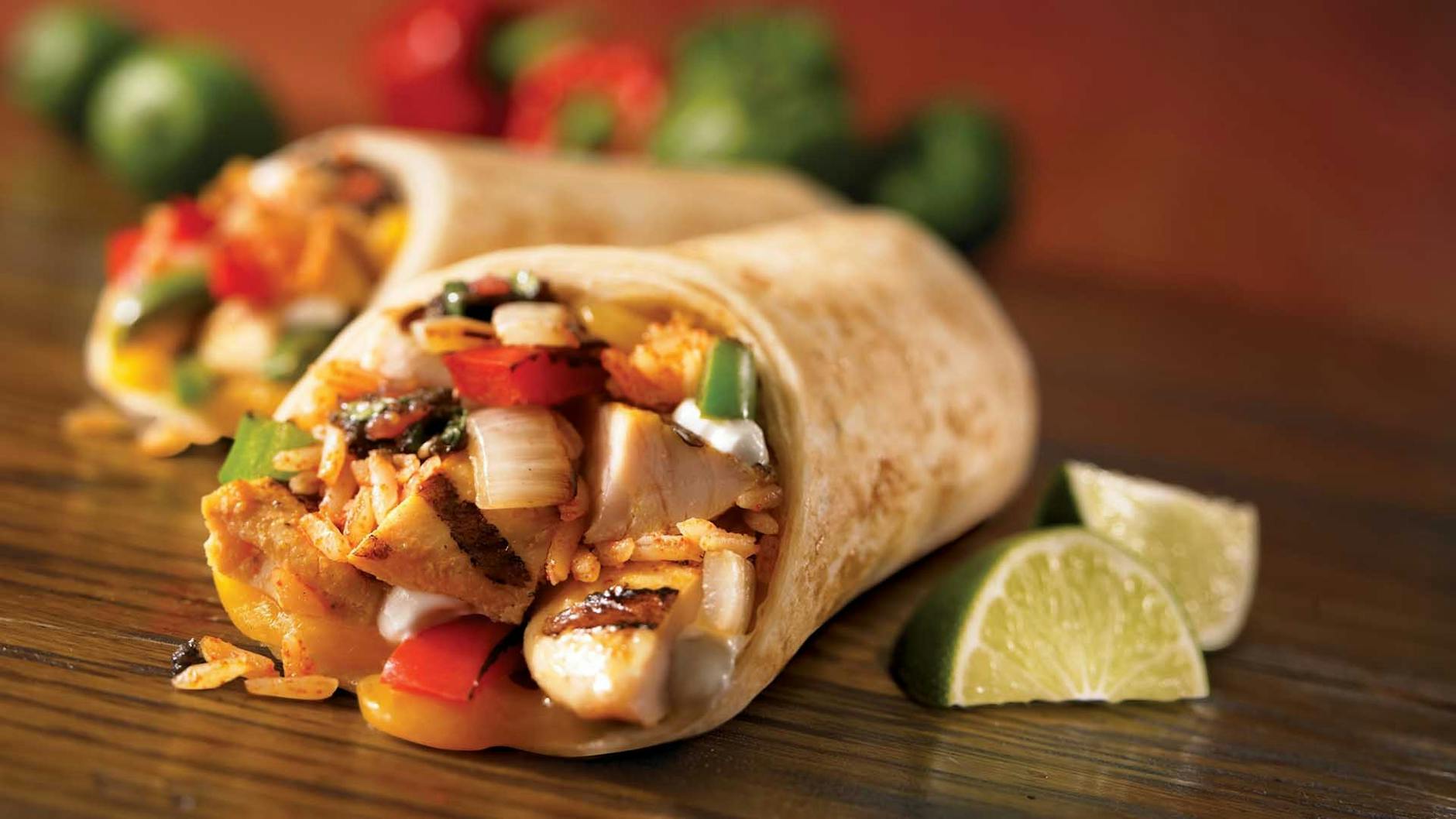Are you curious about whether fiery foods can torch calories? At FOODS.EDU.VN, we delve into the science behind the claim that spicy food and weight loss are linked, offering insights and practical advice to help you make informed dietary choices while discovering delicious culinary options and broadening your understanding of nutrition. Discover tantalizing recipes and explore the world of thermogenesis, calorie expenditure and appetite suppression.
1. Understanding the Link Between Spicy Food and Weight Loss
Spicy food has been touted as a potential aid in weight loss, but is there any truth to this claim? Let’s break down the science behind it. Capsaicin, the active compound in chili peppers, is known for its metabolism-boosting and appetite-suppressing qualities. Some studies suggest that capsaicin can increase thermogenesis, the process in which your body burns calories to produce heat. This can potentially lead to a slight increase in calorie expenditure.
However, it’s essential to understand that the effects of spicy food on weight loss are generally modest. While including spicy dishes in your diet might provide a small boost, it’s not a magic bullet. A sustainable and holistic approach to weight loss involves a balanced diet, regular exercise, and mindful eating habits, all of which are extensively covered at FOODS.EDU.VN.
2. The Role of Capsaicin in Metabolism and Appetite
Capsaicin isn’t just responsible for the burning sensation you feel when eating spicy food; it also plays a role in how your body processes energy and manages hunger. Research indicates that capsaicin can activate the sympathetic nervous system, which can lead to an increase in metabolism. A study published in the Journal of Nutritional Science found that capsaicin supplementation could increase energy expenditure by approximately 50 calories per day.
Additionally, capsaicin has been shown to influence appetite. Some studies suggest that it can increase feelings of fullness and reduce overall calorie intake. For example, a study in the British Journal of Nutrition reported that participants who consumed capsaicin before a meal ate significantly fewer calories compared to those who didn’t. These appetite-suppressing effects, combined with a slight metabolic boost, make capsaicin a compound of interest in weight management.
Here’s a table summarizing the effects of capsaicin:
| Effect | Description | Source |
|---|---|---|
| Thermogenesis | Increases heat production, leading to higher calorie expenditure | Journal of Nutritional Science |
| Appetite Suppression | Enhances feelings of fullness and reduces overall calorie intake | British Journal of Nutrition |
| Metabolism Boost | Activates the sympathetic nervous system, potentially increasing metabolic rate | Various studies on capsaicin supplementation |





3. Examining the Scientific Evidence: What Studies Say
To truly understand the impact of spicy food on weight loss, it’s important to examine the scientific evidence. Numerous studies have explored the effects of capsaicin and other compounds found in spicy foods on various aspects of weight management. While some studies show promising results, it’s crucial to approach the findings with a balanced perspective.
One meta-analysis published in the journal Appetite reviewed multiple studies and concluded that capsaicinoids (a group of compounds including capsaicin) could have a small but significant effect on energy expenditure and fat oxidation. However, the researchers also noted that the effects varied among individuals and that more research is needed to determine the optimal dosage and duration of capsaicin consumption for weight loss.
Another study in the American Journal of Clinical Nutrition found that regular consumption of red pepper could help improve fat oxidation and reduce appetite, particularly in individuals who don’t typically consume spicy food. This suggests that the effects of capsaicin might be more pronounced in those who are not accustomed to it.
Here’s a summary of key findings from scientific studies:
- Increased Energy Expenditure: Capsaicin can slightly increase the number of calories your body burns.
- Appetite Regulation: Spicy food may help reduce overall calorie intake by promoting feelings of fullness.
- Fat Oxidation: Regular consumption of spicy peppers might improve the body’s ability to burn fat.
4. Potential Benefits Beyond Weight Loss
Beyond weight loss, incorporating spicy food into your diet can offer several other health benefits. Chili peppers are rich in vitamins and antioxidants, which can contribute to overall well-being. For instance, they are a good source of vitamin C, which supports the immune system, and vitamin A, which is essential for vision and skin health.
Additionally, some studies suggest that capsaicin may have anti-inflammatory and pain-relieving properties. It has been used in topical creams to help alleviate pain associated with conditions like arthritis and neuropathy. Furthermore, capsaicin may have cardiovascular benefits by helping to lower blood pressure and improve cholesterol levels.
Here’s a quick overview of the additional health benefits:
- Rich in Vitamins: Good source of vitamin C and vitamin A.
- Anti-inflammatory Properties: May help reduce inflammation in the body.
- Pain Relief: Can be used topically to alleviate pain.
- Cardiovascular Health: May help lower blood pressure and improve cholesterol levels.
| Benefit | Description | Supporting Nutrients |
|---|---|---|
| Immune System Support | Boosts immune function | Vitamin C |
| Vision and Skin Health | Supports healthy vision and skin | Vitamin A |
| Inflammation Reduction | May help reduce inflammation | Capsaicin |
| Pain Alleviation | Provides pain relief when applied topically | Capsaicin |
| Cardiovascular Improvement | Can contribute to lower blood pressure and better cholesterol levels | Capsaicin |
5. The Downside: Risks and Considerations
While there are potential benefits to eating spicy food, it’s important to be aware of the risks and considerations. For some people, spicy food can cause discomfort and adverse reactions. Common side effects include heartburn, acid reflux, and stomach upset. Individuals with sensitive digestive systems or conditions like irritable bowel syndrome (IBS) may need to limit or avoid spicy foods.
Moreover, it’s possible to develop a tolerance to capsaicin over time, which means you might need to consume increasing amounts to experience the same effects. This could potentially lead to overconsumption and increase the risk of adverse effects. It’s also worth noting that not all spicy foods are created equal; some may contain high levels of sodium or unhealthy fats, which can counteract any potential weight loss benefits.
Here’s a summary of the potential risks:
- Digestive Issues: Heartburn, acid reflux, and stomach upset.
- Tolerance: Decreased sensitivity to capsaicin over time.
- Unhealthy Ingredients: High levels of sodium or unhealthy fats in some spicy foods.
6. Practical Ways to Incorporate Spicy Food into Your Diet
If you enjoy spicy food and want to incorporate it into your diet for potential weight loss benefits, there are several practical ways to do so. Start by adding small amounts of spices and chili peppers to your meals and gradually increase the quantity as your tolerance builds. Experiment with different types of spices, such as cayenne pepper, paprika, ginger, and turmeric, to add flavor and potential health benefits to your dishes.
Consider using fresh chili peppers in your cooking, as they tend to be lower in sodium and additives compared to processed spicy sauces. You can also try making your own spicy condiments, such as chili oil or sriracha, to control the ingredients and adjust the spice level to your liking. Pair spicy foods with lean proteins, vegetables, and whole grains to create balanced and nutritious meals.
Here are some ideas for incorporating spicy food into your meals:
- Add Cayenne Pepper to Eggs: Sprinkle a pinch of cayenne pepper on your scrambled eggs or omelets.
- Spice Up Soups and Stews: Add chili flakes or diced jalapeños to your favorite soup or stew recipes.
- Make Spicy Marinades: Use chili powder, garlic, and ginger to create flavorful marinades for chicken, fish, or tofu.
- Create Spicy Vegetable Dishes: Roast vegetables like broccoli, cauliflower, or Brussels sprouts with a sprinkle of red pepper flakes.
| Meal | Spicy Addition | Potential Benefits |
|---|---|---|
| Breakfast | Cayenne pepper in scrambled eggs | Metabolism boost, appetite control |
| Lunch | Chili flakes in vegetable soup | Increased thermogenesis, added nutrients |
| Dinner | Spicy marinade for grilled chicken | Flavor enhancement, appetite suppression |
| Snacks | Roasted vegetables with red pepper flakes | Satisfying crunch, thermogenic effect |
7. The Importance of a Balanced Diet and Lifestyle
While incorporating spicy food into your diet can offer potential benefits for weight loss and overall health, it’s essential to remember that it’s just one piece of the puzzle. A balanced diet and healthy lifestyle are crucial for achieving and maintaining a healthy weight. Focus on eating a variety of nutrient-dense foods, including fruits, vegetables, lean proteins, and whole grains.
Limit your intake of processed foods, sugary drinks, and unhealthy fats. Engage in regular physical activity, such as cardio exercises, strength training, and flexibility exercises, to burn calories, build muscle, and improve overall fitness. Get enough sleep, manage stress, and stay hydrated to support your body’s natural processes.
Here are some key components of a balanced diet and lifestyle:
- Nutrient-Dense Foods: Fruits, vegetables, lean proteins, and whole grains.
- Limit Processed Foods: Avoid sugary drinks and unhealthy fats.
- Regular Physical Activity: Cardio, strength training, and flexibility exercises.
- Adequate Sleep: Aim for 7-8 hours of quality sleep per night.
- Stress Management: Practice relaxation techniques and mindfulness.
| Element | Importance | Practical Tips |
|---|---|---|
| Balanced Diet | Provides essential nutrients and supports healthy weight management | Eat a variety of fruits, vegetables, lean proteins, and whole grains |
| Physical Activity | Burns calories, builds muscle, and improves overall fitness | Aim for at least 150 minutes of moderate-intensity exercise per week |
| Adequate Sleep | Supports hormone regulation and overall well-being | Establish a consistent sleep schedule and create a relaxing bedtime routine |
| Stress Management | Reduces cortisol levels and promotes healthy habits | Practice mindfulness, meditation, or yoga to manage stress effectively |
8. Debunking Myths About Spicy Food and Weight Loss
There are several myths surrounding spicy food and weight loss that need to be debunked. One common myth is that eating spicy food can magically melt away fat. While capsaicin can provide a slight metabolic boost and help suppress appetite, it’s not a miracle cure for weight loss. It’s essential to have realistic expectations and understand that sustainable weight loss requires a comprehensive approach.
Another myth is that all spicy foods are healthy. While chili peppers and spices can offer health benefits, some spicy foods may contain high levels of sodium, unhealthy fats, or additives, which can be detrimental to your health. It’s crucial to choose your spicy foods wisely and focus on whole, unprocessed options.
Here are some common myths and the realities behind them:
- Myth: Spicy food magically melts away fat.
- Reality: Capsaicin provides a slight metabolic boost and helps suppress appetite but isn’t a miracle cure.
- Myth: All spicy foods are healthy.
- Reality: Some spicy foods may contain high levels of sodium, unhealthy fats, or additives.
- Myth: Eating more spicy food always leads to greater weight loss.
- Reality: Overconsumption can lead to adverse effects, and tolerance can develop over time.
| Myth | Reality |
|---|---|
| Spicy food melts away fat | Capsaicin provides a small metabolic boost but requires a comprehensive approach for weight loss |
| All spicy foods are healthy | Some spicy foods contain unhealthy additives; choose wisely |
| More spicy food equals more weight loss | Overconsumption leads to adverse effects; tolerance develops over time |
9. Consulting Experts: What Nutritionists and Dietitians Say
To gain a well-rounded understanding of the topic, it’s beneficial to consult with nutritionists and dietitians. These experts can provide evidence-based advice and help you create a personalized plan that aligns with your individual needs and goals. Many nutritionists emphasize that while spicy food can be a part of a healthy diet, it shouldn’t be relied upon as the sole strategy for weight loss.
Instead, they recommend focusing on a balanced diet, regular exercise, and mindful eating habits. Additionally, they can help you identify any potential risks or contraindications related to spicy food consumption, especially if you have underlying health conditions or sensitivities. Experts at FOODS.EDU.VN continually update their knowledge base to keep you informed.
Here’s what experts generally advise:
- Balanced Diet: Focus on a variety of nutrient-dense foods.
- Regular Exercise: Engage in physical activity to burn calories and improve overall fitness.
- Mindful Eating: Pay attention to your body’s hunger and fullness cues.
- Personalized Plan: Work with a professional to create a plan that meets your individual needs.
| Advice | Description | Benefits |
|---|---|---|
| Focus on a balanced diet | Eat a variety of fruits, vegetables, lean proteins, and whole grains | Provides essential nutrients and supports healthy weight management |
| Engage in regular exercise | Participate in cardio, strength training, and flexibility exercises | Burns calories, builds muscle, and improves overall fitness |
| Practice mindful eating | Pay attention to your body’s hunger and fullness cues | Helps regulate calorie intake and promotes healthy eating habits |
| Consult with a professional | Work with a nutritionist or dietitian to create a personalized plan | Ensures a safe and effective approach to weight loss and overall health |
10. Delicious Spicy Recipes to Try
If you’re looking to add more spicy food to your diet, there are countless delicious recipes to explore. From fiery curries to zesty salsas, there’s something for every palate. Experiment with different cuisines and flavor combinations to find your favorite spicy dishes. Remember to adjust the spice level to your liking and use high-quality ingredients to maximize the health benefits.
Here are a few recipe ideas to get you started:
- Spicy Thai Green Curry: A flavorful and aromatic curry made with coconut milk, green chilies, and a variety of vegetables and spices.
- Jalapeño and Cheddar Stuffed Chicken: Chicken breasts stuffed with a mixture of jalapeños, cheddar cheese, and cream cheese, then baked or grilled.
- Spicy Black Bean Salsa: A zesty salsa made with black beans, corn, red onion, jalapeños, and lime juice.
- Sriracha Shrimp Stir-Fry: A quick and easy stir-fry made with shrimp, vegetables, and a spicy sriracha sauce.
| Recipe | Key Ingredients | Spice Level | Health Benefits |
|---|---|---|---|
| Spicy Thai Green Curry | Coconut milk, green chilies, vegetables, spices | Medium | Rich in antioxidants, vitamins, and minerals |
| Jalapeño Cheddar Stuffed Chicken | Chicken breasts, jalapeños, cheddar cheese | Medium | High in protein, moderate in carbs, provides a good balance of nutrients |
| Spicy Black Bean Salsa | Black beans, corn, red onion, jalapeños, lime juice | Medium | High in fiber, protein, and vitamins; low in fat |
| Sriracha Shrimp Stir-Fry | Shrimp, vegetables, sriracha sauce | High | Lean protein source, rich in vitamins and minerals; good source of omega-3 fatty acids |
11. Monitoring Your Body’s Response
When incorporating spicy food into your diet, it’s essential to pay attention to your body’s response. Not everyone tolerates spicy food equally, and some individuals may experience adverse effects. If you notice any discomfort, such as heartburn, acid reflux, or stomach upset, it’s important to adjust your intake accordingly.
Start with small amounts of spices and chili peppers and gradually increase the quantity as your tolerance builds. Keep a food journal to track your reactions and identify any potential triggers. If you have any underlying health conditions or sensitivities, consult with a healthcare professional before making significant changes to your diet.
Here are some tips for monitoring your body’s response:
- Start Small: Begin with small amounts of spices and chili peppers.
- Keep a Food Journal: Track your reactions and identify potential triggers.
- Adjust Intake: If you experience discomfort, reduce your intake.
- Consult a Professional: Seek advice from a healthcare professional if needed.
| Aspect | Monitoring Tips | Actions to Take |
|---|---|---|
| Digestive Discomfort | Pay attention to symptoms like heartburn, acid reflux, and stomach upset | Reduce spicy food intake, consult a healthcare professional if symptoms persist |
| Allergic Reactions | Watch for symptoms like skin rashes, itching, swelling, or difficulty breathing | Discontinue spicy food consumption, seek immediate medical attention if symptoms are severe |
| Changes in Bowel Movements | Note any changes in frequency, consistency, or color of bowel movements | Adjust spicy food intake, consult a healthcare professional if changes are significant or persistent |
12. Long-Term Sustainability
For any dietary change to be effective, it needs to be sustainable in the long term. While incorporating spicy food into your diet can offer potential benefits, it’s important to consider whether it’s something you can realistically maintain over time. If you don’t enjoy spicy food or find it difficult to tolerate, there are plenty of other strategies you can use to support your weight loss goals.
Focus on creating healthy habits that you can sustain in the long run, such as eating a balanced diet, engaging in regular physical activity, and managing stress. Remember, consistency is key when it comes to achieving and maintaining a healthy weight. At FOODS.EDU.VN, we offer resources to help you build sustainable, healthy habits.
Here are some tips for long-term sustainability:
- Enjoyment: Choose spicy foods that you enjoy eating.
- Variety: Incorporate a variety of flavors and cuisines.
- Moderation: Avoid overconsumption to prevent adverse effects.
- Flexibility: Allow for occasional indulgences and adjustments.
| Strategy | Description | Benefits |
|---|---|---|
| Choose enjoyable foods | Select spicy foods that you genuinely like to eat | Increases adherence and makes the dietary change more sustainable |
| Incorporate variety | Experiment with different cuisines and flavor combinations | Keeps meals interesting and prevents boredom |
| Practice moderation | Avoid overconsumption of spicy foods to prevent adverse effects | Prevents digestive issues and maintains long-term tolerance |
| Allow for flexibility | Permit occasional indulgences and adjustments to your diet based on your needs and preferences | Reduces feelings of restriction and promotes a balanced approach to eating |
13. Additional Tips for Weight Loss
In addition to incorporating spicy food into your diet, there are several other tips you can follow to support your weight loss goals. These tips include portion control, mindful eating, staying hydrated, and getting enough sleep. By implementing these strategies alongside a balanced diet and regular exercise, you can create a comprehensive approach to weight loss.
Consider seeking guidance from a healthcare professional or registered dietitian to develop a personalized plan that meets your individual needs and goals. They can provide valuable insights and support to help you stay on track and achieve sustainable results. FOODS.EDU.VN supports your wellness journey by providing in-depth information and resources.
Here are some additional tips for weight loss:
- Portion Control: Be mindful of portion sizes to avoid overeating.
- Mindful Eating: Pay attention to your body’s hunger and fullness cues.
- Stay Hydrated: Drink plenty of water throughout the day.
- Get Enough Sleep: Aim for 7-8 hours of quality sleep per night.
| Tip | Description | Benefits |
|---|---|---|
| Practice portion control | Be mindful of the amount of food you consume in each meal | Helps regulate calorie intake and prevents overeating |
| Engage in mindful eating | Pay attention to your body’s hunger and fullness cues | Promotes a healthier relationship with food and supports better eating habits |
| Stay adequately hydrated | Drink plenty of water throughout the day | Supports metabolism, helps control hunger, and promotes overall health |
| Prioritize sleep | Aim for 7-8 hours of quality sleep each night | Regulates hormones that control hunger and fullness, supports metabolism, and promotes overall well-being |
14. The Role of Genetics and Individual Variation
It’s important to acknowledge that genetics and individual variation can play a significant role in how your body responds to spicy food and weight loss efforts. Some people may be more sensitive to the effects of capsaicin, while others may have a higher tolerance. Genetic factors can also influence your metabolism, appetite, and body composition, which can impact your weight loss journey.
While you can’t change your genetics, you can adapt your approach based on your individual needs and preferences. Experiment with different strategies and find what works best for you. Consider working with a healthcare professional or registered dietitian to gain personalized insights and guidance.
Here are some key points to consider:
- Individual Sensitivity: Some people may be more sensitive to capsaicin.
- Genetic Factors: Genetics can influence metabolism and appetite.
- Personalized Approach: Adapt your approach based on your needs and preferences.
- Professional Guidance: Seek advice from a healthcare professional.
| Factor | Description | Impact on Weight Loss |
|---|---|---|
| Individual Sensitivity | Variation in how people respond to capsaicin | Affects the extent to which spicy food can impact metabolism and appetite |
| Genetic Factors | Genes influence metabolism, appetite, and body composition | Impacts overall weight loss potential and how the body responds to dietary changes |
| Personalized Approach | Tailoring weight loss strategies to individual needs and preferences | Ensures a more effective and sustainable weight loss journey |
| Professional Guidance | Seeking advice from a healthcare professional or registered dietitian | Provides personalized insights and support to help individuals achieve their weight loss goals |
15. Making Informed Choices
Ultimately, the decision of whether or not to incorporate spicy food into your diet is a personal one. It’s important to weigh the potential benefits and risks, consider your individual needs and preferences, and make informed choices that align with your overall health goals. Remember that sustainable weight loss requires a comprehensive approach that includes a balanced diet, regular exercise, and healthy lifestyle habits.
By staying informed, seeking guidance from experts, and listening to your body, you can create a personalized plan that supports your weight loss journey and promotes overall well-being. FOODS.EDU.VN is dedicated to empowering you with the knowledge and tools you need to make healthy choices and achieve your goals.
Here are some key takeaways:
- Personal Decision: Weigh the benefits and risks.
- Informed Choices: Make decisions that align with your health goals.
- Comprehensive Approach: Focus on a balanced diet, exercise, and healthy habits.
- Continuous Learning: Stay informed and seek expert guidance.
| Aspect | Recommendation | Benefits |
|---|---|---|
| Personal Decision | Consider individual needs, preferences, and tolerance to spicy food | Ensures the dietary change is enjoyable and sustainable |
| Informed Choices | Stay informed about the potential benefits and risks associated with spicy food consumption | Helps make informed decisions that align with overall health goals |
| Comprehensive Approach | Focus on a balanced diet, regular exercise, and healthy lifestyle habits | Promotes a holistic approach to weight loss and overall well-being |
| Continuous Learning | Stay updated with the latest research and seek guidance from healthcare professionals | Ensures that weight loss strategies are evidence-based and tailored to individual needs |
16. Spicy Food and Cultural Traditions
Spicy food holds a significant place in many cultural traditions around the world. From the fiery curries of India to the spicy stews of Mexico, countless cuisines feature chili peppers and spices as key ingredients. These culinary traditions often reflect the unique flavors, ingredients, and cooking techniques of a particular region or culture.
Exploring different spicy dishes can be a great way to expand your culinary horizons and learn about other cultures. It can also provide an opportunity to discover new flavors and ingredients that you may not have tried before. Just remember to adjust the spice level to your liking and be mindful of any potential sensitivities or allergies.
Here are some examples of spicy dishes from different cultures:
- India: Vindaloo Curry, Sambar, Chili Chicken
- Mexico: Mole Poblano, Chiles Rellenos, Spicy Salsa
- Thailand: Green Curry, Tom Yum Soup, Pad See Ew with Chili
- Korea: Kimchi, Bibimbap with Gochujang, Spicy Tteokbokki
| Culture | Spicy Dish | Key Ingredients | Spice Level |
|---|---|---|---|
| India | Vindaloo Curry | Chili peppers, vinegar, garlic, ginger, spices | High |
| Mexico | Mole Poblano | Chili peppers, chocolate, spices, nuts | Medium |
| Thailand | Green Curry | Green chilies, coconut milk, galangal, lemongrass, herbs | Medium |
| Korea | Spicy Tteokbokki | Rice cakes, gochujang (chili paste), vegetables | High |
17. The Psychology of Eating Spicy Food
The experience of eating spicy food can be quite psychological. The burning sensation caused by capsaicin triggers the release of endorphins, which are natural pain relievers that can create a sense of pleasure and well-being. This may explain why some people find spicy food addictive or crave the “heat” that it provides.
Additionally, the act of eating spicy food can be a sensory experience that engages multiple senses, including taste, smell, and touch. This can make the eating experience more enjoyable and satisfying. However, it’s important to be mindful of your body’s response and avoid overconsumption, as this can lead to adverse effects.
Here are some psychological aspects of eating spicy food:
- Endorphin Release: Capsaicin triggers the release of endorphins.
- Sensory Experience: Engages multiple senses.
- Craving: Some people crave the “heat” of spicy food.
- Mindful Consumption: Avoid overeating due to the sensory experience.
| Psychological Aspect | Description | Impact on Eating Behavior |
|---|---|---|
| Endorphin Release | Capsaicin triggers the release of endorphins, which are natural pain relievers that create pleasure | May lead to increased enjoyment and craving for spicy food |
| Sensory Experience | Eating spicy food engages multiple senses, including taste, smell, and touch | Enhances the eating experience and can make it more satisfying |
| Craving | Some people crave the “heat” of spicy food | May result in increased consumption of spicy food, requiring mindful consumption to avoid adverse effects |
| Mindful Consumption | Being aware of the sensory experience and avoiding overeating | Promotes a balanced approach to eating and prevents potential discomfort or health issues associated with overconsumption of spice |
18. Frequently Asked Questions (FAQs)
Here are some frequently asked questions about spicy food and weight loss:
-
Can spicy food really help you lose weight? Spicy food, particularly the capsaicin in chili peppers, may offer a slight metabolic boost and help suppress appetite, but it’s not a magic solution for weight loss.
-
How much spicy food do I need to eat to see results? The amount varies depending on individual tolerance and sensitivity. Start with small amounts and gradually increase as tolerated.
-
Are there any side effects of eating spicy food? Common side effects include heartburn, acid reflux, and stomach upset.
-
Can spicy food damage your stomach? For some people, especially those with sensitive stomachs or conditions like IBS, spicy food can cause discomfort.
-
Is it safe to eat spicy food every day? Eating spicy food every day is generally safe for most people, but it’s important to monitor your body’s response and adjust your intake as needed.
-
What are some healthy ways to incorporate spicy food into my diet? Use fresh chili peppers, spices, and homemade spicy condiments to add flavor to your meals.
-
Does spicy food boost your metabolism? Capsaicin can slightly increase thermogenesis, which can lead to a small increase in calorie expenditure.
-
Can spicy food suppress your appetite? Some studies suggest that capsaicin can increase feelings of fullness and reduce overall calorie intake.
-
What are the best spicy foods for weight loss? Chili peppers, cayenne pepper, paprika, ginger, and turmeric are all great options.
-
Should I consult a healthcare professional before adding spicy food to my diet? If you have any underlying health conditions or sensitivities, it’s always a good idea to consult with a healthcare professional before making significant changes to your diet.
19. Resources on FOODS.EDU.VN
At FOODS.EDU.VN, we offer a wealth of resources to help you explore the world of spicy food and make informed choices about your diet. You can find detailed articles on the health benefits of various spices, delicious spicy recipes, and expert advice on incorporating spicy food into a balanced diet.
Additionally, we provide tools and resources to help you track your progress, set goals, and stay motivated on your weight loss journey. Whether you’re a seasoned spice lover or just starting to experiment with new flavors, FOODS.EDU.VN has something for everyone.
Here are some specific resources you can find on our website:
- Articles: In-depth articles on the health benefits of various spices and chili peppers.
- Recipes: A collection of delicious spicy recipes from around the world.
- Expert Advice: Guidance from nutritionists and dietitians on incorporating spicy food into a balanced diet.
- Tools: Trackers and planners to help you monitor your progress and set goals.
20. Conclusion: The Spicy Path to Wellness
In conclusion, while spicy food may offer some potential benefits for weight loss, it’s not a magic bullet. Capsaicin, the active compound in chili peppers, can provide a slight metabolic boost and help suppress appetite, but sustainable weight loss requires a comprehensive approach. Focus on a balanced diet, regular exercise, and healthy lifestyle habits.
By making informed choices, listening to your body, and seeking guidance from experts, you can create a personalized plan that supports your weight loss journey and promotes overall well-being. Explore the wealth of resources available at FOODS.EDU.VN to empower yourself with the knowledge and tools you need to achieve your goals and embrace a spicy path to wellness.
Ready to learn more and explore the world of healthy eating? Visit FOODS.EDU.VN today and discover a treasure trove of delicious recipes, expert advice, and valuable resources. Our team of culinary experts and nutritionists is dedicated to helping you achieve your health goals while enjoying the flavors you love.
For personalized guidance and support, contact us at:
- Address: 1946 Campus Dr, Hyde Park, NY 12538, United States
- WhatsApp: +1 845-452-9600
- Website: FOODS.EDU.VN
Start your journey to a healthier, happier you with foods.edu.vn!

